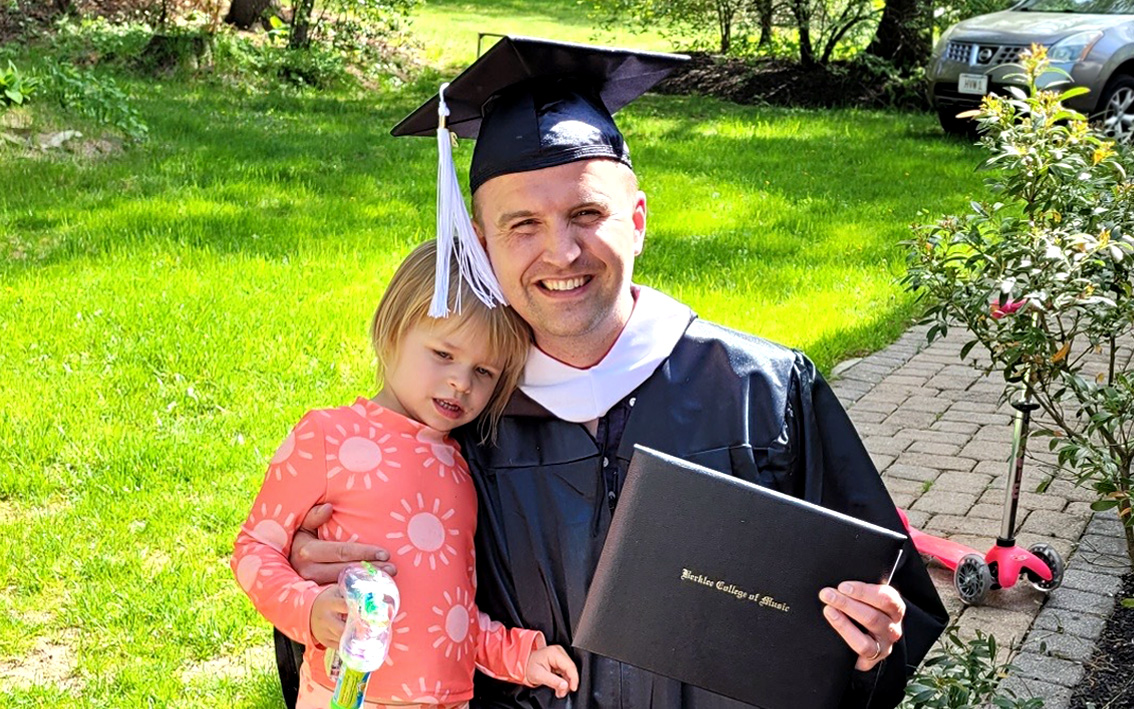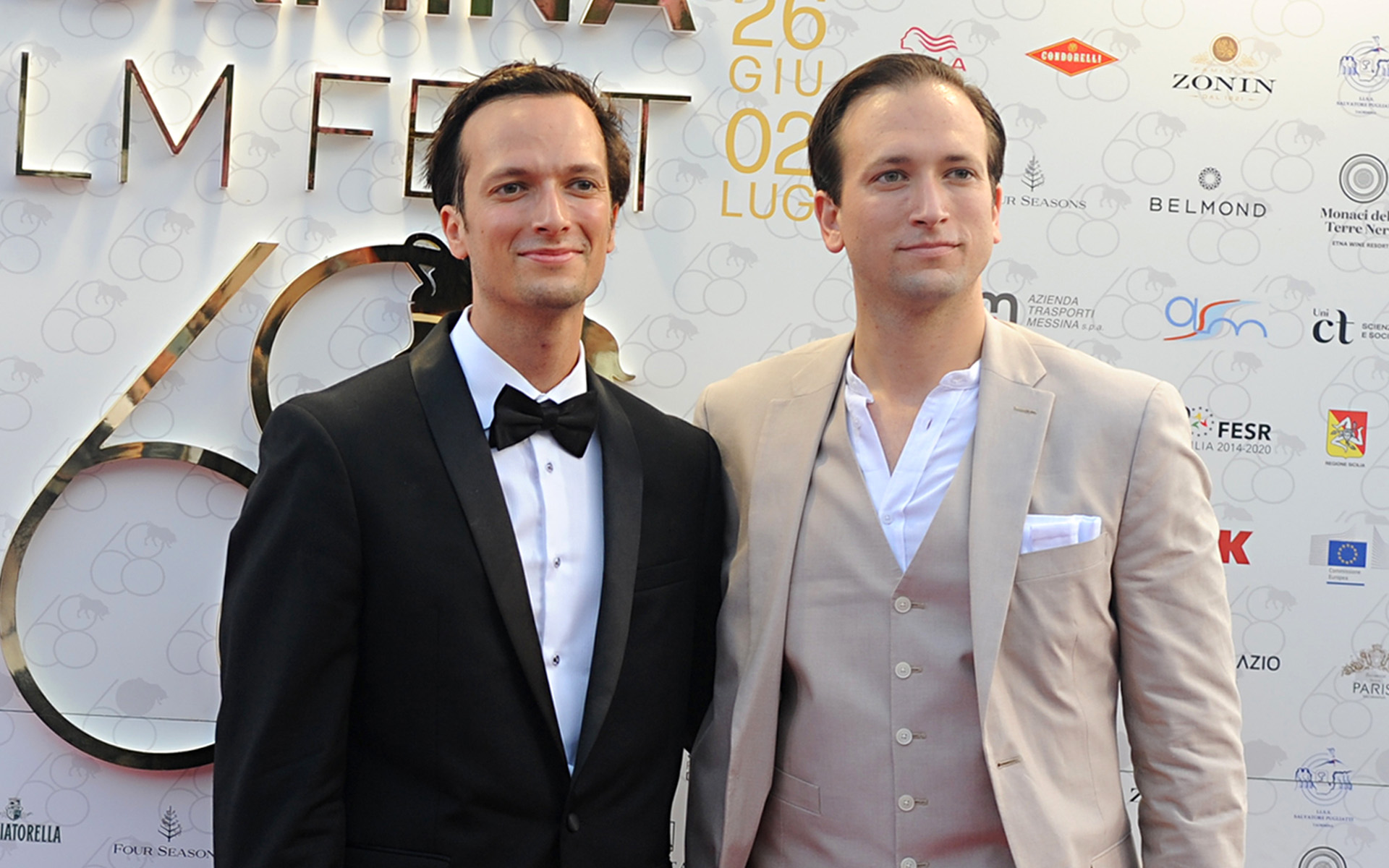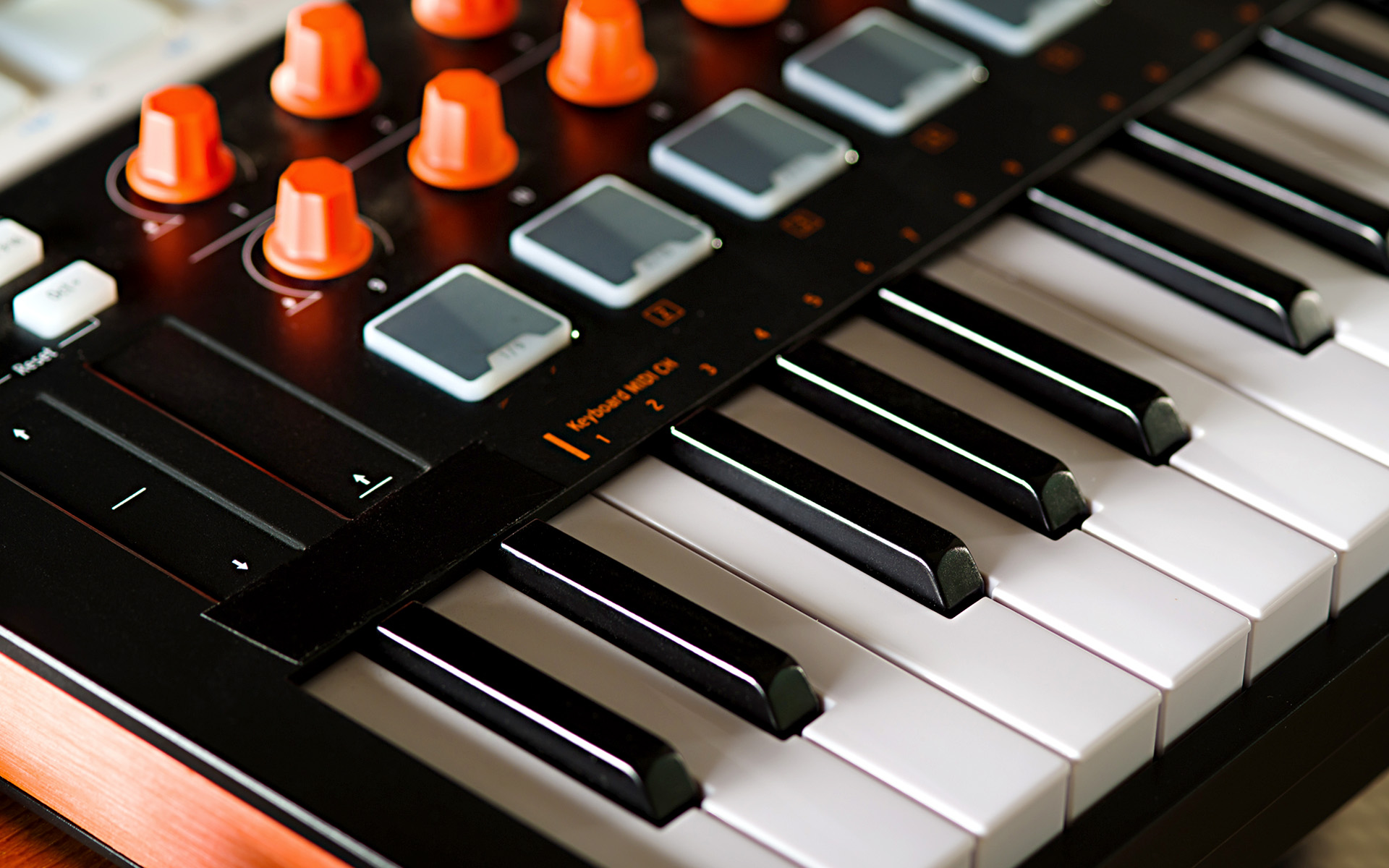The following information on film scoring is excerpted from the Berklee Online course Composing the Orchestral Film Score, written by Sean McMahon, and currently enrolling.
In film scoring, there is one axiom to keep in mind: The dialogue allows us to understand the movie, sound effects allow us to hear the movie, but it’s the music that allows us to feel the movie.
Composer George S. Clinton once said, “a composer interprets a film dramatically and expresses it musically.” It’s true that the composer is a translator who takes a storyline and turns it into music, but it’s not so much the musical notes the film needs as much as it is the emotion that flows from those notes.
Film music hasn’t done its job unless it provides the audience with the right emotional support for a given scene or movie. And unlike concert music, the film composer must work within the constraints of the medium such as the unyielding duration of every cue, director approval, ridiculous deadlines, and so forth.
There are some general concepts that we can apply to film scoring. These are, however, general concepts only. Undoubtedly, exceptions exist and the intention is to make the composer aware of these concepts that broadly exist in Hollywood film music—not handcuff the composer with them. Think of what you learn here as tools, not rules.
Musical Form in Film Scoring
At its most fundamental level, the biggest difference between film music and concert music is form. For example, what separates a score like John Williams’ Star Wars: A New Hope and a typical symphony written during the late Romantic era? It’s not the harmonic language. Nor the instrumentation or orchestration. It’s not the general aesthetic. It’s the form.
Understanding form is critical to your success as a film composer. Form is not a new concept. The organization of ideas or objects is critical to most art forms and has been around as long as the art forms themselves. For example, plays have three acts, and photographers have the rule of thirds. Form is all around us.
For most film music to be effective, it needs to synchronize with the picture it supports, emphasizing important dramatic moments with downbeats or new musical sections. Film composers must fashion their music around the picture, following all the twists and turns.
In contrast, concert music is free of these constraints. Concert hall composers don’t have a film to serve. Film composers must support the picture while maintaining structural cohesion of the music. They can’t take a myopic view and chop off a beat haphazardly here and add a beat there as they write their cues. Film composers must first think about the cue in a holistic manner. With the big picture in mind, they can then determine where in the scene the music needs to change and how to get to that point in the most musical way possible.
Context in Film Scoring
Like all things in film scoring, context is key. Never make a musical choice that seems unnatural or that conflicts with your dramatic intuition.
Generally, the more distance between the camera and the subject, the “bigger” the music can be. These are referred to as long shots. For example, a camera shot taken of a mountain vista from a helicopter or drone would be considered a long shot. Take a look at the below shot:

A shot like this can generally handle a lot of instrumentation and volume in the right context.
The opposite is true for closeups. Music tends to be “smaller” the closer the camera is to the subject. For example, take a look at the below shot of someone writing a letter.

It would be inappropriate to have a “big” sound for such a small and delicate shot. Intuitively, you can probably tell that this shot requires a “small” sound.
The below example is a movie excerpt from the film E.T., scored by John Williams. In this scene, E.T. is exploring Earth and collects a sapling. There is a closeup that shows E.T.’s hands pulling the sapling from the ground. There is also a closeup of a bunny rabbit observing him. Then the film cuts to a long shot of the forest, revealing how diminutive E.T. is compared to the colossal trees that surround him.
At that moment, the music gets louder (bigger) and the range of the orchestra also expands. While the example is subtle—as film music often is—it’s a good example of this concept in practice.
Example: ‘E.T. the Extra-Terrestrial’
Interior vs. Exterior Shots
Similar to long shots vs. closeups, there can be a relationship between the size of the music and interior vs. exterior shots. Exterior scenes lend themselves well to the use of long shots. The music can afford to be “big” in these exterior shots. Oftentimes, exterior shots then cut away to interior shots, at which point the music usually decreases in size—or vice versa.
For example, watch the scene below. It is an excerpt from Jurassic Park, also scored by John Williams. The characters are traveling to an island by helicopter. You will notice that when the camera is outside of the helicopter (exterior shot) the music tends to be big. We hear brass and full orchestra at those moments.
When the film cuts back to the interior of the helicopter, it quickly gets smaller. This happens a few times during the three-minute scene. Because dialogue occurs inside the helicopter, it is particularly important that the music decreases in size in those moments.
Example: ‘Jurassic Park’
If your music doesn’t get softer for the quieter moments of the film, such as inside the helicopter in the Jurassic Park example, the dubbing mixer will pull the music stems down at the dub so the dialogue can be heard more clearly. Your music always has a better chance at being heard in the film if it complements—and never competes with—the dialogue.
STUDY MUSIC FOR FILM, TV, AND GAMES AT BERKLEE ONLINE
Hard Outs vs. Tail Outs
Generally, there are three ways to end a cue:
- hard out
- tail out
- a combination of hard out and tail out
Hard Outs
A hard out occurs when a cue ends on a short and accented downbeat or crescendos into an abrupt silence. It is typically a sync point and aligns with some action onscreen or picture cut. See the below example from Spider-Man 3, scored by Christopher Young. The cue builds up to Harry tripping on the web Peter spins and ends by accenting the moment of impact. The director wanted the sound effects of Harry falling to the ground to be featured and isolated.
Example: ‘Spider-Man 3’
Tail Outs
Most of the time, cues tail out when they end. A tail out is usually comprised of a final note or chord that is long, sustained, and usually has a fermata when notated. It fades away gradually.
Tail outs are desirable because the exiting of the music tends to go unnoticed by the audience, helping them to stay immersed in the story.
Sometimes music editors ask conductors to hold the fermatas for as long as reasonably possible at the scoring session. On big budget films, the edit changes frequently, even after the music has been recorded. Shots are added and removed.
When a film editor extends the scene after the cue has been recorded, it is very helpful for the music editor to have a little extra material to work with, even if it’s just a few more seconds. The music editor usually wants to avoid having to copy and paste material to elongate a cue.
See the below example of a tail out from the film Ghost Rider, also scored by Christopher Young.
Example: ‘Ghost Rider’
Combining Hard Outs and Tail Outs
Many cues end by combining hard outs and tail outs. The advantage of using this technique is that the cue ends by accenting a specific moment while allowing the music to fade out inconspicuously.
Take a look at the below example from a film called Priest, once again scored by Christopher Young. The music accents the ending of the animated first scene, which fades to black at the end of the monologue and reveal of the movie’s title. If you watch the full movie—available on Apple TV and Amazon—you’ll see a door opening in the next scene, combined with the long tail that bridges the animated opening of the film to the live action section.
Example: ‘Priest’
The “repeat and fade out” is usually avoided with a film’s underscore. You are probably familiar with this technique because many pop songs don’t have true endings. One part of the song, usually the chorus, is repeated and then fades out. Songs in a film commonly end this way, but almost never underscore.
As we mentioned earlier, form is the main element that distinguishes concert music from film music. Because film music—first and foremost—must serve the picture, the music must be fashioned around the visuals. When the drama or emotion of a scene shifts, so must the music.
Kinetics in Film Scoring
Kinetics is a term used to describe the movement and energy of a scene. It’s not an industry-wide term but it’s one that we’ll use here. All movies and scenes have kinetics. An action scene has a lot of kinetic energy. But a less energetic scene has kinetics too. The rate and pacing of picture cuts, camera movements, onscreen actions by actors or objects, and the delivery of dialogue lines, for example, all contribute to a scene’s kinetics. Your job as a film composer is to match the kinetics and energy of the scene with your music.
Sync Points in Film Scoring
The points where the music shifts or accents particular moments onscreen are called sync points. A sync point could happen at a picture cut or on an action such as a character turning their head or an explosion. Another instance of a sync point could be right after an actor delivers a dramatically significant line of dialogue.
The placement of sync points, for the most part, govern the form of a cue. Sync points usually do not require some sort of “stab” or “hit” like a low brass “splat” or piatti cymbal crash. They are usually the start of a new musical section or phrase.
Sync points usually fall into one of two categories:
- hard sync points
- soft sync points
Hard Sync Points
Hard sync points are sync points that need to occur on a specific frame. They are usually reserved for more energetic and forceful actions such as explosions, punches, and picture cuts.
Soft Sync Points
Conversely, soft sync points are sync points that don’t have to be accurate to a specific frame. They give the composer a little flexibility, because the musical emphasis can happen during a range of frames or even seconds. Soft sync points are usually reserved for more subtle and understated actions such as a head turn, the end of an actor’s line, a kiss, or a dissolve.
Film Scoring Takeaways
Understanding structure in film music is imperative to becoming a more effective film composer. Form is the fundamental musical element that separates film music from concert music. I’ll leave you with a few key takeaways as you begin your film scoring journey:
- Watch the scene you are scoring many times so you deeply understand the kinetics and dramatic shifts.
- Tempo map your cue in chronological order before you compose it.
- A sync point is usually the beginning of a new musical section.
- Use 2-, 4-, 8-, or 16-bar phrases as the basic units to get you from one musical section to the next. Additional measures should be added to the end of sections.
- Always extend phrases—never sever them in an unmusical fashion. Don’t start a new musical phrase unless you have enough beats available to bring it to completion.
- Tempo and meter changes should be as imperceptible as possible.
- When aligning sync points, always change the tempo from the earliest possible location. This is almost always the previous sync point.
- If you will be recording with live musicians, always write with the playability of the parts in mind.
- The right solution when tempo mapping is almost always the more musical solution.
- Extensions added on at the end of a phrase should organically flow from the previous measures.
- Spend time researching the musical direction of a film before you write the first cue.
- Organize your cues into theme categories and compose one category at a time.
- Limit the number of themes in a film to the fewest possible needed to effectively serve the picture.
- Repeat your themes often because music operates subconsciously on the audience.
TAKE A COURSE WITH SEAN McMAHON












